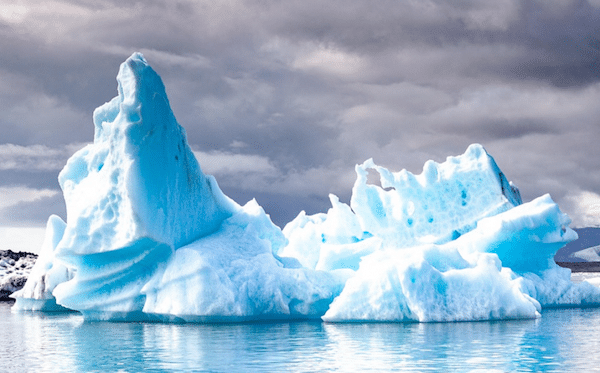Earth’s ice caps are simmering in a bad spell of heat, with temperatures reaching unprecedented extremes in both the poles. Currently, some parts of Antarctica have been reported to witness swelling in temperature that is over 70 degrees Fahrenheit (40 degrees Celsius) warmer than the usual average. Similarly, in the north, areas of the Arctic have 50 degrees Fahrenheit (30 degrees Celsius) warmer than the expected average. Scientists claim these temperatures are freakish with a danger warning for the future.
As Antarctica nears autumn, weather stations situated there recorded unusual heat in the last week. The simmering heat spell has been recorded at the Concordia station, two miles above sea level. The Concordia station recorded a temperature of about 10 degrees Fahrenheit (-12.2 degrees Celsius) and this is 70 degrees warmer than the average, reported Associated Press. Similarly, the Vostok station, which is even higher than the Concordia, recorded a 27 degree Fahrenheit higher than the average. Vostok is also in Antarctica.
Usually, Antarctica sees temperatures ranging from minus 50 to minus 60 degrees Fahrenheit at this time of the year; that is the early fall season in the southernmost point of the planet. Notably, for the last 65 years, during this season (March and April), temperatures have never reached beyond minus 22 degrees Fahrenheit, said Stefano Di Battista, a journalist and a climatology researcher, in his Twitter handle. This time Concordia had around 10 degrees Fahrenheit.
Commenting on the rather unexpected and unusual event, Jonathan Wille, a postdoc researcher at the Université Grenoble Alpes, wrote,
This is when temperatures should be rapidly falling since the summer solstice in December. This is a Pacific Northwest 2021 heatwave kind of event. Never supposed to happen.
Along with this, another alarming situation could also be observed in Antarctica. Sea ice levels in the region hit their lowest ever coverage area in the past 43 years. The ice levels fell below 2 million square kilometres. However, according to experts, the low ice levels could be attributable to another phenomenon: the development of a low-pressure system in the inner peninsula in 2021. “It’s very likely that what we’re seeing now is within the range of variability that we’ve seen over the last century. So even this record low, we probably have seen that before in the last century. We’re seeing just year-to-year fluctuations in the longer-term context,”—explained Ryan Fogt, a climate scientist and an associate professor at Ohio University.
At the opposite of Antarctica, the Arctic region at the northernmost point of Earth also witnessed an unusual soar in temperature. It was found to be 50 degrees Fahrenheit warmer than the average. This is also strange for the region during the early spring season. The temperature was 6 degrees higher than the average yearly temperature, and the north pole crept to the melting point. “They are opposite seasons. You don’t see the north and the south (poles) both melting at the same time. It’s definitely an unusual occurrence,”—commented Walt Meier, a scientist at the National Snow and Ice Data Center.
While the world is concerned about climate change and almost irreversible global warming, the polar region is specifically important owing to their sensitive climatic conditions. Climate change’s impact is seen even more rapidly than the rest of the world. The Arctic region is a subject of the phenomenon known as Arctic amplification. The melting of glaciers and sea ice trigger a feedback loop in the region which cause warming to continue. Significantly, the Arctic is warming twice or thrice as faster as the rest of the world.
Antarctica, on the other hand, appears more complicated. Unlike the north pole, it has a thin stretch of land in the form of the Antarctic peninsula and is warming five times faster than the rest of the world.
The unusual warming in both poles is alarming when artificial climate change does not appear to be under control. Experts believe that some of the impacts will be irreversible even if human activities are stalled immediately.

